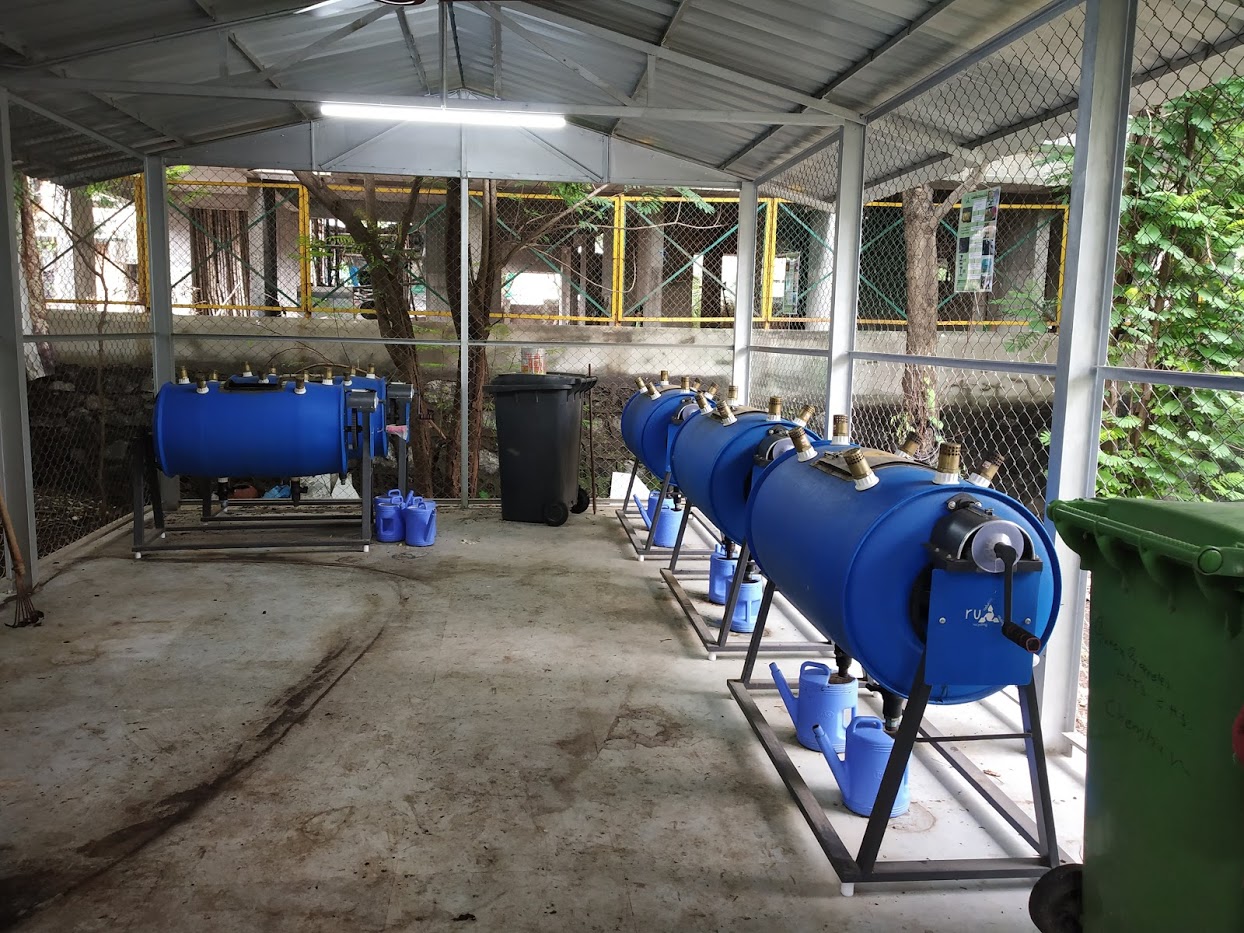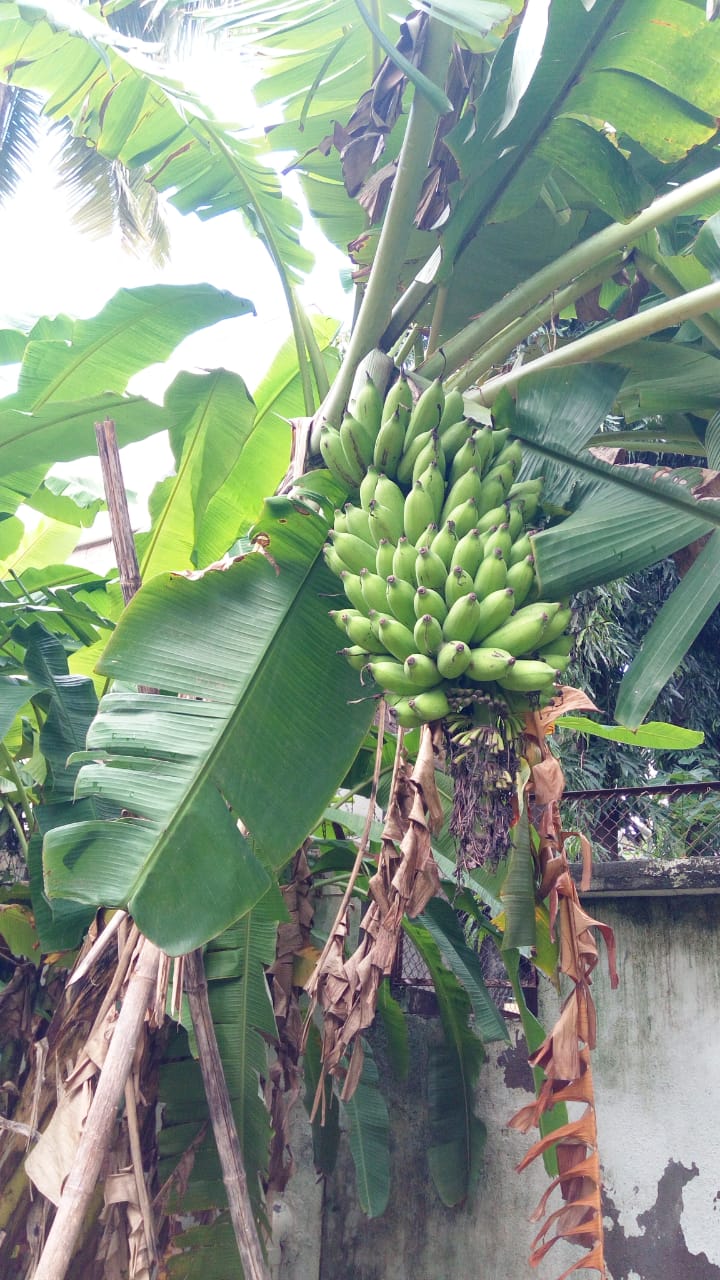73 Mumbai Homes Join Hands to Stop 1,500 Kg of Garbage From Ending Up in Landfills!
The first step was to encourage and train community members to segregate their waste into different categories such as dry, wet, and electronic waste.

Spread across six acres in the suburb of Chembur in Mumbai, lies Green Garden Apartments, a gated community of 73 individual bungalows.
These households once generated over 600 kg of waste per month, most of which would be picked up by the Brihanmumbai Municipal Corporation (BMC) van, to be dumped into the nearest landfill. No segregation, no processing.
Planning to segregate waste at home? Check out some composters on The Better India Shop, here.
Since the last one year though, this society has embarked on a zero-waste journey.

The residents now segregate organic waste in their homes and process it to produce about 100 kg of compost. This is used to enrich their green garden spaces.
The Better India caught up with society secretary, Rohit Chemburkar, to document this journey.
In an exclusive interview, Chemburkar, who has been instrumental in mobilising the community to take up waste segregation and processing, recalls that it was an idea he learnt at an early age.
Way before the society took the initiative, Chemburkar’s father, Arun Chemburkar, practiced it. Although an engineer by qualification, he was an environmentalist and avid gardener.
Rohit shares, “He [Arun] made compost pits in our bungalow, where he processed waste using vermiculture (earthworms) and then used the manure in our garden. I am proud to say that apart from a few plastic bags, there was absolutely no waste going out of my house when I was growing up. I did not realise how much waste my father had prevented from being sent to landfills, until he passed away in 2015.”
In 2016, almost a year after Arun’s death, the BMC had issued a directive for apartments, making it compulsory for them to create their own recycling facilities. The amount of garbage picked up by the municipality van pushed Rohit and other community members to take charge of waste segregation and processing in their society.
They looked up best avenues and technologies to do this, when they came across city-based socio-environmental organisation, RUR GreenLife.
It provided them with the technological solutions, along with extended support for more than a year.

“The approach of RUR GreenLife’s technology was to mimic the natural process where different elements of nature work together to convert waste or biomass into compost/manure that can nourish and enhance the growth of plants.”
Christened RUR GreenGold Bio-Composter (RGGC), this system consists of bins of different capacities. Once the waste is segregated, all the biodegradable waste is added to them. Apart from kitchen waste that consists of fruit and vegetable peels, eggshells, tea leaves, coffee grounds, fish-meat bones, leftover food, additional brown inputs like crushed dry leaves, sawdust, and cocopeat must be added. The brown inputs prevent foul smells during waste degeneration.
The bungalows were also given shredders to crush garden waste like branches, leaves, and twigs before adding these to the composting bins.
These bins are then rotated every alternate day through a system that ensures a balance of key composting elements–Air, Temperature and Moisture–making aerobic composting safe and efficient. These Green Gold Bio-composters are placed in a ventilated space, like the parking lot or terrace.
How did they execute the project?

The first step was to encourage and train community members to segregate their waste into different categories such as dry, wet, and electronic waste.
To make the process smooth, the society hired a local contractor who picks up the segregated waste from individual homes and takes it to a composting facility set up by RUR GreenLife.
The contractor uses a segregation table and further separates the collected waste. He then sells the dry waste to scrap dealers.
Composting in RGGC is completely natural and requires 4-6 weeks to generate organic compost. Once this is ready, it is left to dry and cure.
The society that has been using the technology for the last year, generating 100 kg of compost per month. “We use it in our green garden spaces where we grow banana, papaya and several ornamental plants!”
You May Also Like: Earth Walls to Organic Food: Gujarat Couple Quits US Job to Create Food Forest!
The liquid generated as part of the composting process is diluted in water and used to enhance the growth of plants and trees within the society. Apart from common spaces that have banana plantations, papaya, and Gulmohar trees, the compost is also available for the residents to use in their gardens. “All the residents who have used this rich compost rave about its effect on the plants,” says Rohit.
He adds how the community is happy at the small steps they have taken to contribute to the environment and reduce their annual waste contribution to landfills.
In a final message to other societies, Chemburkar signs off, “Dumping waste is a huge problem. Composting is a simple activity and it can help you not only reduce waste but also transform it into wealth by creating compost that can further nurture green spaces. It’s never too late to get started. The question is: Are you willing to take your first step to help the environment?”
(Edited by Shruti Singhal)
Like this story? Or have something to share?
Write to us: [email protected]
Connect with us on Facebook and Twitter.
If you found our stories insightful, informative, or even just enjoyable, we invite you to consider making a voluntary payment to support the work we do at The Better India. Your contribution helps us continue producing quality content that educates, inspires, and drives positive change.
Choose one of the payment options below for your contribution-
By paying for the stories you value, you directly contribute to sustaining our efforts focused on making a difference in the world. Together, let's ensure that impactful stories continue to be told and shared, enriching lives and communities alike.
Thank you for your support. Here are some frequently asked questions you might find helpful to know why you are contributing?


This story made me
-
97
-
121
-
89
-
167














